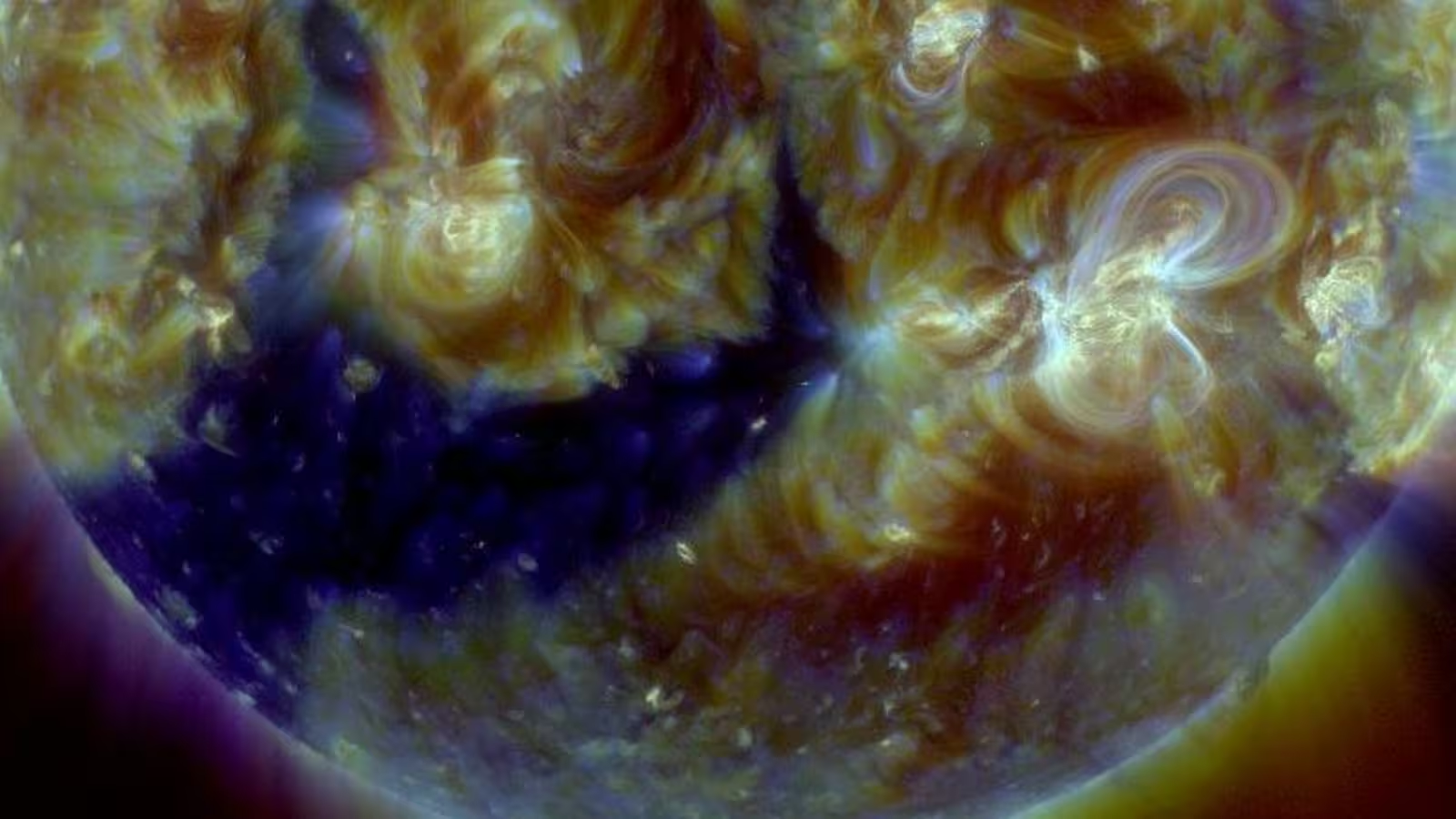3 Minutes
Scientists Track Enormous Solar Coronal Hole Impacting Earth
A vast coronal hole has recently formed in the Sun’s outer atmosphere, unleashing high-speed solar wind streams directly toward Earth. This solar event, monitored by the NOAA Space Weather Prediction Center, is projected to trigger a moderate (G2-level) geomagnetic storm beginning around June 14.
What Are Coronal Holes and Why Do They Matter?
Coronal holes are areas on the Sun's surface where magnetic field lines open outwards into space, rather than looping back to the Sun. In these regions, the Sun’s magnetic influence weakens and makes it easier for streams of charged particles—also known as solar wind—to escape at accelerated speeds. This phenomenon is a natural but dynamic part of the Sun's 11-year solar activity cycle and has significant effects on space weather observed from Earth.
When this fast-moving solar wind reaches our planet, some of the charged particles interact with Earth’s magnetic field. These particles follow the field lines toward higher latitudes near the poles, where they penetrate into the upper atmosphere. Here, they collide with atmospheric gases, creating vibrant auroras—known as the northern (aurora borealis) and southern (aurora australis) lights. These dazzling displays are strongest during geomagnetic storms like the upcoming G2 event.
Geomagnetic Storm: What Is a G2-Level Event?
Geomagnetic storms are classified on a scale from G1 (minor) to G5 (extreme). The current event is expected to reach G2, indicating a moderate level of activity. While not hazardous, G2 storms can cause minor operational adjustments for satellites and may briefly disrupt high-frequency radio communications. For observers on the ground, the most exciting impact is the increased likelihood of auroras being visible much farther from the poles—potentially up to 55 degrees north and south latitude.
Experts caution that with the approach of the summer solstice in the Northern Hemisphere, the short nights may limit the chances to witness auroras. Dr. Tamitha Skov, a leading space weather scientist, notes, “We’re entering the solar activity maximum, a period that rewards skywatchers with frequent and vivid auroral displays.”
Looking Ahead: Ongoing Solar Activity and Observing Opportunities
This solar maximum—the most active phase in the Sun's regular 11-year cycle—continues to produce high levels of solar activity, including frequent coronal holes and significant solar storms. Advances in satellite monitoring and space weather forecasting mean scientists can alert the public about heightened geomagnetic conditions with increasing accuracy, giving enthusiasts opportunities to experience the awe of the auroras and contributing to our broader understanding of the Sun-Earth connection.
Conclusion
The appearance of a substantial coronal hole on the Sun underscores the powerful interactions within our solar system that can have visible and measurable effects on Earth. While this moderate geomagnetic storm is not a threat, it offers a remarkable opportunity to observe auroral activity and deepens scientific understanding of space weather phenomena. As solar maximum continues, events like these provide both challenges and inspiration—from satellite operators safeguarding equipment to skywatchers enjoying nature’s most colorful light show.
Source: sciencealert



Comments